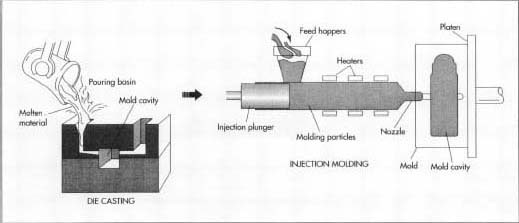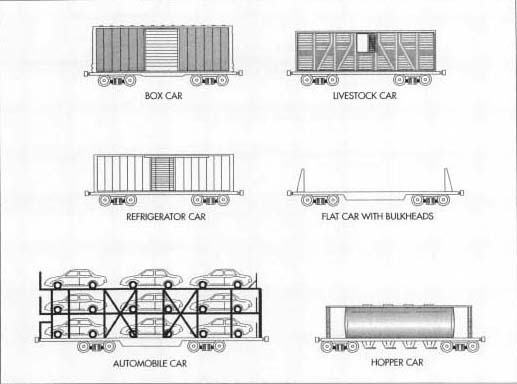Model Train
Background
"Dear Dad: One thing I want this Christmas more than anything is a Lionel Electric Train.… You ought to see the way they run! Like a million dollars. And they whistle too. Real railroad whistle signals by remote control. You can couple and uncouple cars electrically, from a distance, just by touching a button; and reverse the train or speed it up or slow it down. Please get me a Lionel, Dad. We'll have lots of fun together."
This letter was featured in a pull-out section of the 1938 Lionel Trains catalog, leaving space for a boy to note which model number train his father should purchase. Lionel electric model trains were all the rage in 1938, had been for many years prior, and continued to be through the 1950s. Though declining in popularity since the 1960s, the trains are still manufactured and sold throughout the world today. Many adults now collect old Lionel train models, as evidenced by the number of hobby shops and collectors' shows dedicated to the product, and the thousands of members of the Train Collectors Association. Lionel is the largest manufacturer of toy trains in the world.
An electric train runs by transferring a positive current from one track rail through to the motor and then returning the current through the negative track rail. The current is then transferred to a transformer or battery, completing the circuit.
History
Joshua Lionel Cowen claimed to have embarked upon several other inventions prior to his namesake train, including the flash-light, the dry-cell battery and the motorized fan. Whether these claims were true or not is subject to dispute, but there is no argument that Cowen devised one of the first motorized trains as an ad gimmick for a New York City toy manufacturer in the early 1900s. Cowen's idea was not entirely unique; a German toy maker had featured a model electric streetcar at the Columbian World's Fair in Chicago in 1893 and a Cincinnati firm, Carlisle & Finch, came up with a similar invention in 1896. Cowen's original battery-operated invention was not a toy, however. It served solely to draw attention to the other merchandise in the toy shop window and resembled a box on wheels. The words "Electric Express" were embossed on the sides. However, the toy shop customers began requesting the electric car as well as the other merchandise and Cowen began to market his invention.
Cowen soon upgraded his design and began to make a variety of components. In addition to steam locomotives, Pullman sleepers, baggage cars, freight cars and cabooses, he made electric trolleys as well. Trains bearing the logos of various rail lines were available, too, and railroad companies began to submit blueprints of new designs to Lionel in the hopes that he would create a model based on them and give them some free advertising. The transformer was also introduced in the early 1900s.
In 1902, Cowen produced the first of what would become his trademark train catalogs. This 16-page, black-and-white version paled in comparison to the later full-color wish books, but still served as a useful marketing tool. Catalogs and advertising were primary components of the Lionel marketing strategy and for decades the company promoted

Lionel joined the war effort in 1917, producing compasses, binnacles, and navigating equipment for the U.S. Navy. The company also offered a model war train. By the 1930s, Cowen began to re-think his decision to promote war toys, however. The post-war years were profitable for the Lionel Corporation, as the company was renamed when it was reorganized in 1918. Lionel's sales in 1920 topped $2 million. The Great Depression took its toll on the company, but the 1934 introduction of a handcar operated by Mickey and Minnie Mouse, endorsed by Cowen's friend Walt Disney, helped the company bounce back. Lionel introduced streamlined engines that year to reflect the new Burlington Zephyr and Union Pacific City of Port-land in use in the real train world. Lionel introduced remote control operation that year as well. A painstakingly accurate model of the New York Central's Hudson-type steam engine was released in 1937 in an effort to appeal to the burgeoning market among adult model railroad enthusiasts.
World War II halted the production of Lionel trains for a period as all scrap metal was directed toward the war effort, but Lionel remained secure with $5.5 million in government contracts. In order to sustain its popularity in the interim, the company released a paper model train, dubbed the "Wartime Freight Train." Metal trains were back, though, once the war ended and in 1957 Lionel introduced the ill-received pastel pink and blue model train for girls. Cowen retired in 1958, the company's first losing year since the Depression. Nine months later he sold the company to his grand-nephew. With the advent of airplanes, racing cars, and tele-vision, model trains dropped in popularity over the next three decades. The company has been purchased several times since Cowen first sold it and is now owned by a group of four investors, one of whom is the rock musician Neil Young, an avid model train collector. Young's interest in Lionel leadership began when he helped the company design a remote control device that could be operated by persons with handicaps affecting their grip. Young hoped to actively share his hobby with his sons, who have cerebral palsy. Since 1970, Lionel trains have been manufactured in Mt. Clemens, Michigan, a suburb of Detroit.
Raw Materials
The primary materials used to manufacture Lionel trains are metals such as steel, aluminum, zinc, and plastic.

The Manufacturing
Process
The various components of the Lionel train, such as engines, cabooses, boxcars, and tankers, are designed on a computer.
The engine
- 1 The Lionel steam locomotive engine is made by a process called die-casting, whereby a hot liquid metal, such as steel or zinc, is heated to 900° F (482.2° C) degrees and then shot into a highly detailed mold.
- 2 The mold is then placed in a cooling tank where it cools and hardens to form the body of the locomotive.
- 3 The locomotive body is then trimmed, cut and milled (whereby a high-speed cutter cuts off sections only thousandths of an inch thick to create flat surfaces), both by machine and by hand to form the finished locomotive engine.
- 4 The locomotive body is placed on the assembly line for painting and final assembly.
The cars
- 5 Plastic components are formed in a process called injection molding, where-by plastic pellets are melted and shot into a mold. The liquid cools and hardens into the shape of the component. Metal components other than the engine are die-cast.
- 6 The components are placed on an assembly line and sent to a drilling station, where a combination of manual and automated processes are used to attach hundreds of tiny accessories, created earlier in a process known as sub-assembly, such as ladders, headlights and handrails.
- 7 Any die cast parts undergo a process called phosphating, where the component is dipped in a phosphate solution to open up pores in the metal and allow for any paint to soak in.
- 8 The metal and plastic components are sent to the painting station where they are sprayed with paint by a machine or painted by hand. Components being painted multiple colors undergo a process called masking, where a mask-like guard is placed over areas that a certain color of paint should not reach.
- 9 At the next station, the components are affixed with lettering and logos through two different processes: hot stamping and pad printing. Hot stamping is used on flat parts and pad printing is used on raised and rounded plastic surfaces and all die-cast surfaces. Hot stamping uses a Mylar-heated rubber dye to emboss print onto the flat surfaces and pad printing uses a dye plate to etch print onto the raised, rounded and die-cast surfaces.
- 10 The engine is affixed to a chassis, which holds the motor, electrical circuitry and wheels. Each car is affixed to a non-motorized chassis that provides support and holds the wheels.
- 11 After successful completion of several quality control tests, the finished model train components are sent to a shipping area where they are packaged and prepared for shipping.
The tracks
- 12 Metal sheets are placed into a forming machine, which cuts the metal into miniature rails and ties.
- 13 The rails and ties are joined together in a hydraulic press.
- 14 After quality control inspections, the track segments are sent to a shipping area where they are packaged and prepared for shipping.
Quality Control
At the end of the assembly line, various functioning components of the train are tested, such as whistles and bells. The engine must be able to run off the line under its own power and climb a 30° incline within 5.5 seconds. Paint colors undergo quality control as well. A color spectrometer is used to ensure that all paint is the precisely right color.
The Future
Lionel train components have always reflected the times. Engines have been modeled after real trains in use during various periods in Lionel's history. The cars often reflect the businesses and interests of the times, from the early milk cars to military components during war times to boxcars bearing the names and logos of major businesses of different periods. It is anticipated that Lionel designs will continue to reflect contemporary society and the real-life rail-roading environment on which the Lionel train is modeled.
Where to Learn More
Books
Hollander, Ron. All Aboard!: The Story of Joshua Lionel Cowen and His Lionel Train Company. New York: Workman Publishing, 1981.
— Kristin Palm